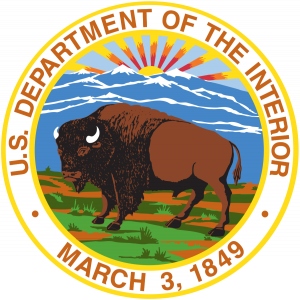A Summary of Recent Rulemaking Actions Taken or Proposed Affecting the Energy Industry — Gravel2Gavel Construction & Real Estate Law Blog — November 15, 2023
It is clear that these have been busy months for federal environmental regulators, especially those working at EPA, the federal departments and the Council on Environmental Quality. Even the Department of Agriculture has found itself coping with greenhouse gases (GHG) issues in its administration of the laws applicable to agriculture and the national forests. The ambitious scope of the current “all of government” approach may be discerned after learning how many disparate federal agencies are employed in implementing this policy. So many actions have been proposed or completed that some state officials are experiencing “comment fatigue” because they are being overwhelmed by the scope, size, and complexity of these federal initiatives. The Environmental Protection Agency is, of course, at the forefront of these actions and activities, as described below.
Environmental Protection Agency (EPA)
The Clean Air Act
On May 23, 2023, EPA sallied forth with a proposal to regulate GHG emissions from power plants under the authority of the Clean Air Act. (See 88 FR 33240.) The first attempt foundered at the Supreme Court in the 2022 case of West Virginia v. EPA. The agency now believes that its statutory authority was enhanced by the recent addition of Section 135 to the Clean Air Act. Time will tell.
In addition to the new power plant rule, EPA has recently released the Final Ozone Transport Rule, or Good Neighbor Rule (88 FR36654), proposed new National Emissions Standards for Hazardous Air Pollutants (88 FR 24854), and proposed Supplemental Effluent Limitations Guidelines for the Steam Electric Generating Point Source Category (88 FR 18824). Then, on October 31, 2023, EPA promulgated final rules requiring PFAS reporting under EPCRA’s “Right to know Rules” as chemicals of special concern (88 FR 74360). The rule is effective on November 30, 2023. Additionally, new TSCA PFAS reporting rules will also impose new requirements on many industries. (See the PFAS rules promulgated at 88FR70516, as explicated by this posting: “EPA Drops Pre-publication of its one-time PFAS Reporting Rule under TSCA section 8(a)(7).”)
On July 21, 2023, EPA issued a final rule removing from Title V of the Act the “affirmative defense provisions” that have been a part of state and federal permitting programs for many years. (See 88 FR 47029; this action was effective as of August 21, 2023.) Many states, including Texas, have approved a State Implementation Plan (SIP) based on state law that allows for the use of “affirmative defenses” against enforcement actions responding to unpermitted releases during a startup, shutdown or plant maintenances. This has become a controversial matter following the DC Circuit’s ruling in NRDC v. EPA, 749 F.3d 1055 (2014). On July 13, 2023, EPA rescinded a 2020 rule that would have encouraged the wider use of cost-benefit analysis in the Clean Air Act rulemaking proceedings. The agency has described the earlier corrective action as both inadvisable and unnecessary. On July 31, 2023, EPA issued an interim final rule to stay the effectiveness of the “Good Neighbor Plan” with respect to ozone emissions generated in certain “upwind” states where some courts had agreed the rule does not apply in these circumstances. While 42 USC § 7410 of the Act requires each state’s SIP to include provisions sufficient to protect the air quality of downwind states affected by ozone emissions, challenges in federal courts have resulted in several rulings that EPA cannot enforce these rules there. A petition to stay the entire rule was rejected by the DC Circuit a few days ago. (See State of Utah, et al. v. EPA, released September 25, 2023.)
The Clean Water Act
On September 8, 2023, EPA and the U.S. Army Corps of Engineers released a final rule revising the regulatory definition of “waters of the United States”, to be consistent with the Supreme Court’s decision in Sackett v. EPA. Justice Kennedy’s concurrence in the 2005 Rapanos case argued that a body of water could be regulated by the Clean Water Act if it had a “significant nexus” to a traditional body of water, but this interpretation was rejected by the Sackett court. As a result, 12 different rules codified in 33 CFR Section 328 and 40 CFR Part 120 were changed, effective on September 8, 2023. A few days later, on September 27, 2023, the revised Clean Water Act Section 401 state certification rules were published in the Federal Register. See 88 FR 66558. These rules take effect on November 27, 2023, and will govern the process by which the states assess the water quality impact of proposed projects requiring a federal permit. The Trump-era EPA issued the first changes in 2020, but EPA has rejected some of these changes in favor of these new rules. It will take some time to determine the width and breadth of the new EPA rules.
The Resource Conservation and Recovery Act (RCRA)
On August 8, 2023, EPA issued a direct final rule making hundreds of technical changes to its existing hazardous waste management program. In 2016, EPA promulgated the Hazardous Waste Generator Improvement Rule, and this follow-up 2023 rule will be effective on December 7, 2023. Operators with existing hazardous waste permits or authorizations should become familiar with these changes. On August11, 2023, EPA issued an Advance Notice of Proposed Rulemaking (ANPR), seeking information and comments on its plans to develop a Used Drum Management Plan; changes to the agency’s RCRA definition of “empty drum or container” may be under consideration. An EPA survey disclosed that many used drum facilities have become sites subject to RCRA or CERCLA cleanups or remedial action. (See 88 FR 548379 August 11, 2023.)
EPA’s “National Enforcement Initiative” for 2024-2027
On August 17, 2023, EPA released its latest “National Enforcement Initiative.” EPA will focus its attention on these areas: mitigating climate change; addressing exposure to PFAS; coal ash contamination; air toxics issues in “environmental justice communities”; and chemical accident releases.
The Department of the Interior
The Fish and Wildlife Service
The Service has relisted the Lesser Prairie Chicken as an endangered species under the Endangered Species Act. This species inhabits historic oil production areas in West Texas and New Mexico, and this listing will require energy operators to work with federal and state regulators to develop these properties. (See 87 FR 72674 (November 25, 2022).)
The Bureau of Land Management
The BLM has proposed new rules that would ensure the health and resilience of ecosystems on all federal lands. Thousands of comments have been received by the Bureau. A new section, 43 Part 6100 would be established, and the rule addresses such matters as ecosystem resilience, restoration and protecting intact landscapes. Also, revised rule 43 CFR §16.1.0-7-2 would allow for the designation of an “area of critical environmental concern.” (See 88 FR 195836 (April 3, 2023).)
The Department of Transportation
On July 5, 2023, the Pipeline and Hazardous Materials Safey Administration (PHMSA) published an ANPR seeking to modernize its Hazardous Materials Rules. There are 46 separate topics under consideration. (See 88 FR 43016 (July 5, 2023).) On September 1, 2023, the PHMSA amended the Hazardous Material Rules to suspend its earlier authorization of LNG transportation by rail. This rule effectively reverses an earlier rule, issued on July 24, 2020, which authorized the rail transportation and shipment of LNG. This suspension will continue until a thorough evaluation of the HWR framework has been completed. On September 20, 2023, DOT established a new NEPA “categorical exclusion” for electric vehicles. (See 88 FR 64972.)
The Department of Agriculture
The Department of Agriculture published a Federal Register notice on July 12, 2023, which seeks comment on an interagency report on developing a federal strategy to announce the measurement and monitoring of GHG emanating from by the Agriculture and Forest Service sectors. (See 88 FR 44251.)
The Department of Energy
On August 16, 2023, the Department of Energy proposed new rules that would encourage the timely federal permitting of interstate electric transmission facilities under the new “CITAP” program (the Coordinated Interagency Transmission, Authorization and Permit Program). Large investments made possible by recent federal legislation, for the development of green energy require an efficient and effective federal permitting program. The deadline for filing comments—October 2, 2023—has now passed. (See 88 FR 55826.) On October 2, 2023, the Department requested the submission of comments regarding the calculation of the value for petroleum equivalent of the fuel economy of electric vehicles. (See 88 FR 67682.)
The Council on Environmental Quality (CEQ)
In January 2023, CEQ published new guidance for agencies regarding their consideration of Greenhouse Gas Emissions and Climate Change. (See 88 FR 1196 (January 9, 2023).)
On July 31, 2023, the CEQ published a Notice of Proposed Rulemaking which implements the amendments made to NEPA by the Fiscal Responsibility Act of 2023 (Applying Environmental Justice to the Regulated Community (pillsburylaw.com). It should be noted that this CEQ proceeding, governed by the Administrative Procedure Act, at last contains a proposed definition of “environmental justice.” Hitherto, all definitions of environmental justice have appeared mostly in policy documents.
The Department of Defense and the Federal Acquisition Rules (FAR)
The federal government is by far the largest purchaser of goods and services and its purchasing decisions can have a broad impact on the economy. The FAR rules are located in Part 48 of the Code of Federal Regulations. On November 14, 2022, the Department of Defense, the General Services Administration and NASA, proposed the revision of these rules to require federal contractors to disclose their greenhouse gas emissions, climate-related financial risks, and set science-based targets to reduce their GHG emissions. (See 87 FR 68312.)
Then, in August 2023, these agencies proposed to change the procurement rules again to emphasize the acquisition of “sustainable products.” This proceeding is the government’s response to a Presidential Executive Order (EO 14057).
The White House
In September 2023, the Biden Administration directed the federal agencies to consider the “social cost of carbon” in the development and implementation of their budgets, agency NEPA reviews, and the federal procurement process. This action will expand the use of this well-known metric in the agencies day-to-day operations. Environmental justice remains a very high priority, and special Environmental Justice offices have been established throughout the federal bureaucracy.
Complementary Actions in the States
The California Legislature has passed several significant climate change laws. Senate Bill 253 is the Climate Corporate Data Accountability Act, and SB 261 is concerned with reporting climate change-related financial risk. Both laws will require extensive data collection and reporting by covered corporations operating in California. Earlier legislation created the Division of Petroleum Market Oversight to confront the increasing cost of gasoline in California. The State of California recently filed a massive climate change nuisance lawsuit in the state courts alleging that the defendant oil companies had engaged in deceptive conduct in their marketing operations. The Commonwealth of Pennsylvania’s Department of Environmental Protections (PADEP) has completed work on the state’s environmental justice policy, which provides guidance on how its policies and procedures to address environmental justice will be implemented in communities located in designated environmental justice areas of the state. In August 2023, a Montana state judge held that the young plaintiffs in a state climate change lawsuit based largely on the Montana Constitution can proceed with their challenges to Montana laws and policies. The court also held that two laws limiting the reach of the Montana State Energy Policy were unconstitutional.
A Final Word
Summing up, these myriad actions constitute a staggering amount of information and regulation, much of it very technical, that must be absorbed, considered, and on which the regulated community—particularly the energy sector—must respond if the federal rule making process is to succeed.
To illustrate this point, on September 28, 2023, David Uhlmann, EPA’s Assistant Administrator for Enforcement and Compliance Assurance, issued a lengthy directive to all EPA enforcement and compliance officials “to address climate change, whenever appropriate, in every matter within their jurisdiction.” This broad mandate, inspired by the President’s Executive Order 14008, was based on the conclusion that “the climate crisis continues to accelerate,” and if we fail to take decisive action by the end of this decade, “searing heat, widespread drought, destructive storms and coastal flooding will become even more commonplace.” Consequently, Uhlmann states that EPA will (1) prioritize enforcement and compliance actions to mitigate climate change; (2) include climate adaptation and resilience in case conclusions whenever appropriate; and (3) provide technical assistance to achieve climate-related solutions and build climate change capacity among EPA staff and their state and local partners. The scope of enforcement contemplated by this directive is very broad and aggressive and will call upon “the full array of EPA’s climate rules”, including GHG reporting and limits on other climate pollutants such as carbon dioxide and nitrous oxide. Special attention will be paid to the oil and gas sectors, and the unique issues that are a part of environmental justice must also be addressed.
Uhlmann concludes by observing that climate change is an “existential threat” to public health and safety. The agency’s actions over the next decade “will determine what kind of world we leave for future generations.”
RELATED ARTICLES
A Court-Side Seat: SCOTUS Rulings, the Fiscal Responsibility Act and the October 2023 Calendar
A Court-Side Seat: Hog Catching, “Hard Looks” and Hardship Exemptions






